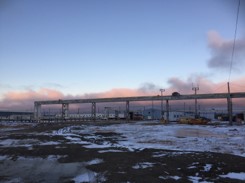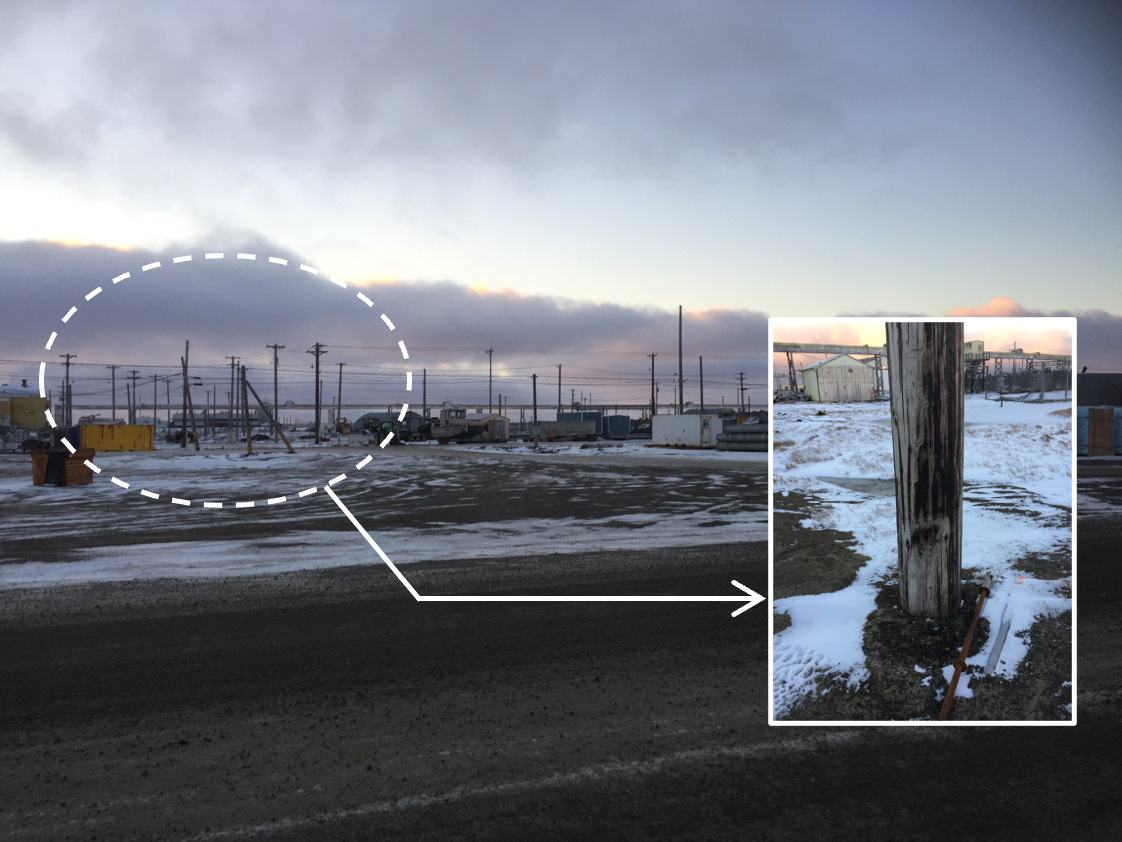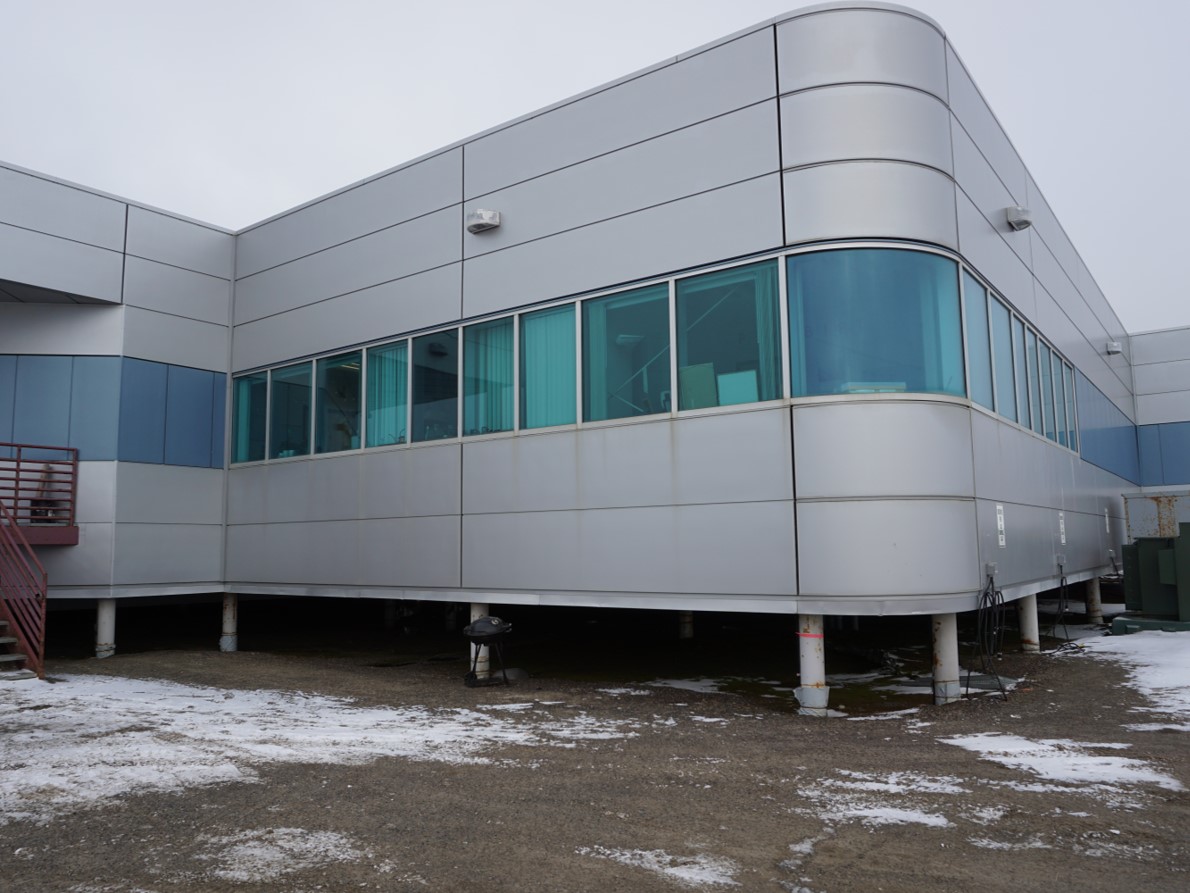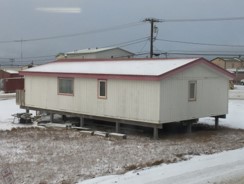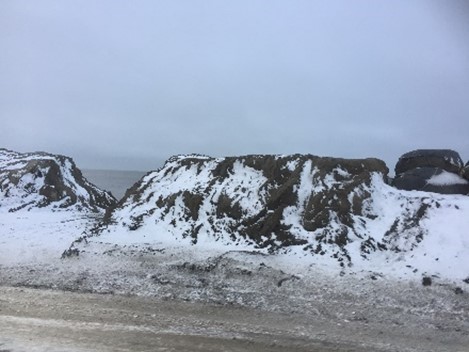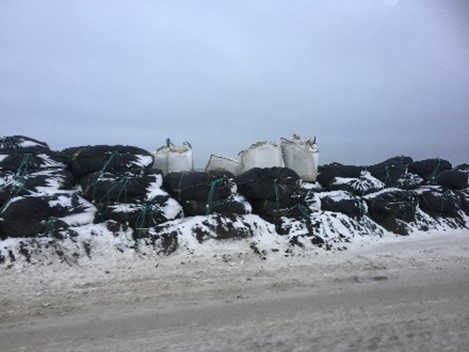Climate warming has led to widespread permafrost degradation and coastal and riverine permafrost erosion, affecting the performance of civil infrastructure and community wellbeing in the Arctic, while the existence of civil infrastructures and anthropogenic activities can also lead to direct or indirect permafrost degradation, releasing permafrost carbon into the atmosphere and intensifying climate warming. Our research team aims to contribute to the creation of climate-resilient, yet sustainable, civil infrastructure systems in permafrost and periglacial environments by unraveling the complex interactions among cryosphere, climate change, civil infrastructure systems, coastal and riverine systems, and anthropogenic processes. We use synergistic and interdisciplinary approaches to understand permafrost degradation in a geotechnical context, develop research tools to accurately project the extent of permafrost degradation and its impact on civil infrastructure systems and vice versa, and create and design climate-resilient and sustainable engineering solutions.
- Investigations of physical processes of permafrost degradation and geophysical and geomechanical properties of permafrost
- Multiphysics numerical modeling for geotechnical applications in permafrost and cold regions
- Community survey and knowledge co-production for understanding effects of permafrost degradation and coastal erosion on civil infrastructure in Arctic coastal villages
- Coastal permafrost erosion and its prevention and remediation measures
- Investigations of effects of civil infrastructure systems and anthropogenic processes on permafrost carbon and its feedback to climate warming
Investigations of physical processes of permafrost degradation and geophysical and geomechanical properties of permafrost
The physical response of permafrost-affected soils to climate warming depends on the complex interplay between increases in air temperature, changes in precipitations, the ground thermal regime, excess ice content, and soil composition. The goal of this research project is to piece together the physical processes of permafrost degradation in a geotechnical context and establish a comprehensive and curated database of permafrost properties that are critical for evaluating the performance of permafrost structures in high northern latitude regions.
The figure on the right depicts a schematic of the permafrost degradation model, which consists of changes in ground thawing and freezing processes. Note that both freezing and thawing processes can occur in active layer or newly formed active layer, which used to be permafrost before being affected by climate warming. Ongoing warming is currently causing thaw-driven cumulative settlement and strength reduction in permafrost.
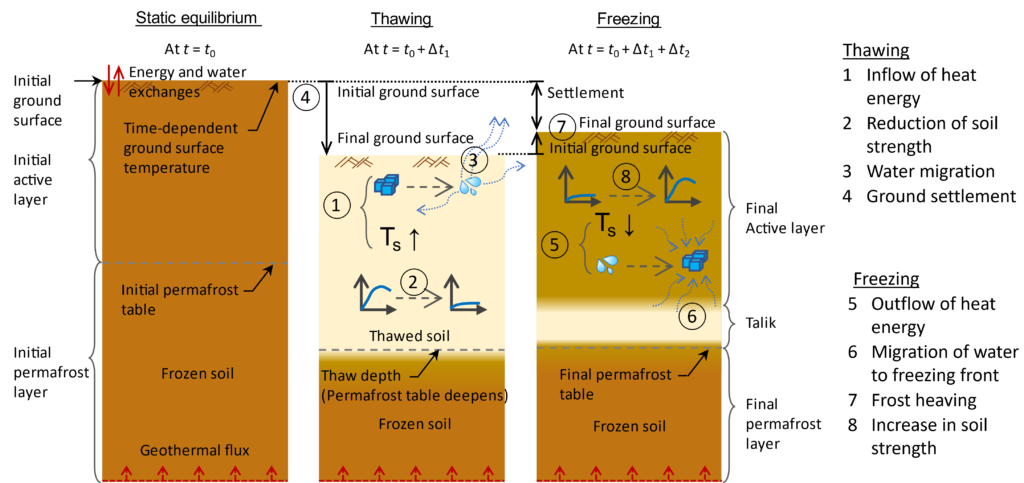
To improve the understanding of permafrost degradation from an engineering perspective, we use data synthesis techniques and laboratory-controlled studies to quantify the compound and cumulative effects of various environmental forcing factors and soil heterogeneity on the geomechanical and geophysical properties of permafrost. The datasets we collected (see the figure on the right) represent a range of geomechanical and geophysical properties of frozen soils with different compositions under different testing conditions. While the data are highly scattered, regression analysis shows that most geomechanical and geophysical properties are strongly associated with temperature. These associations highlight that ongoing warming can significantly affect the performance of civil infrastructures at high northern latitudes.
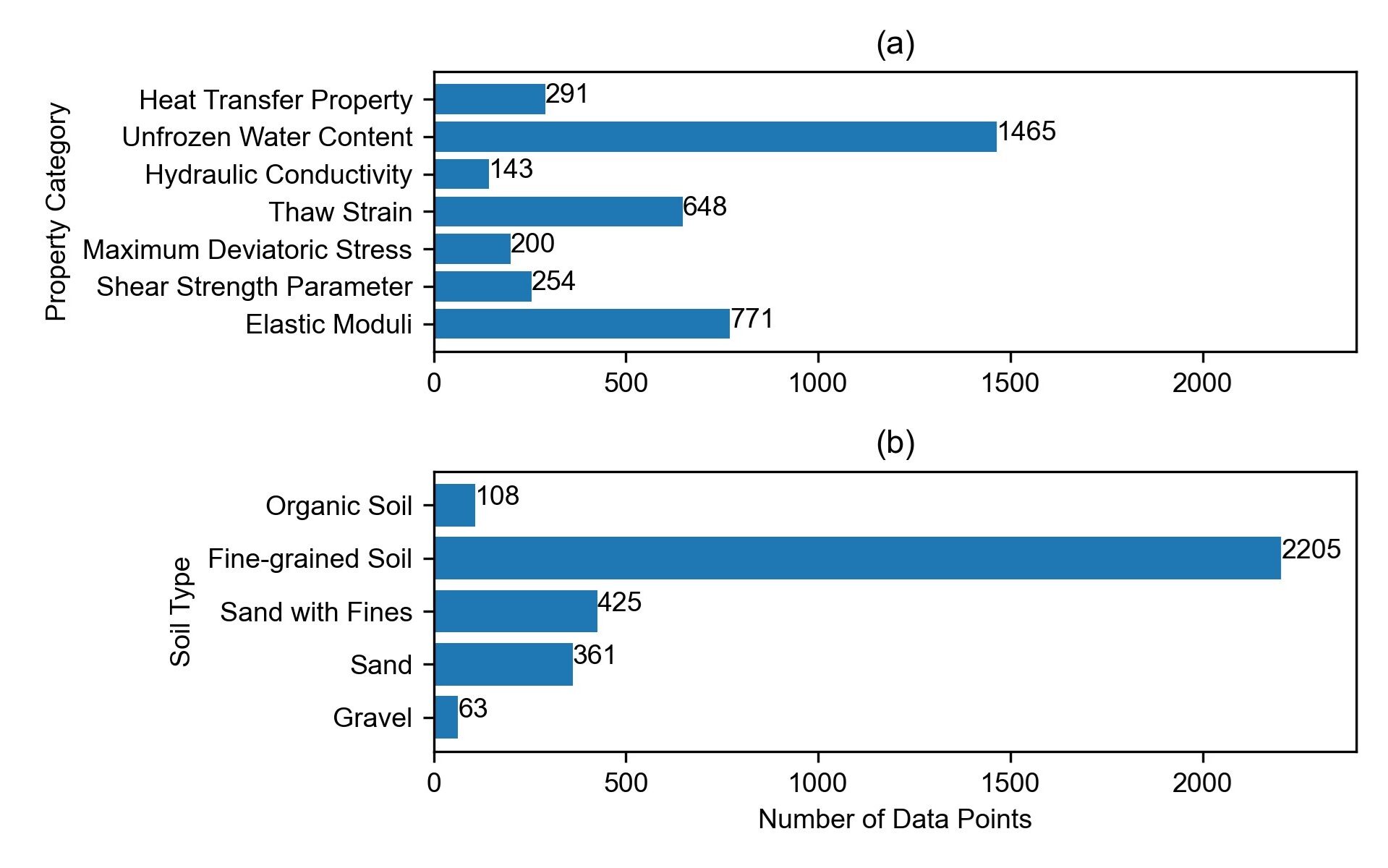
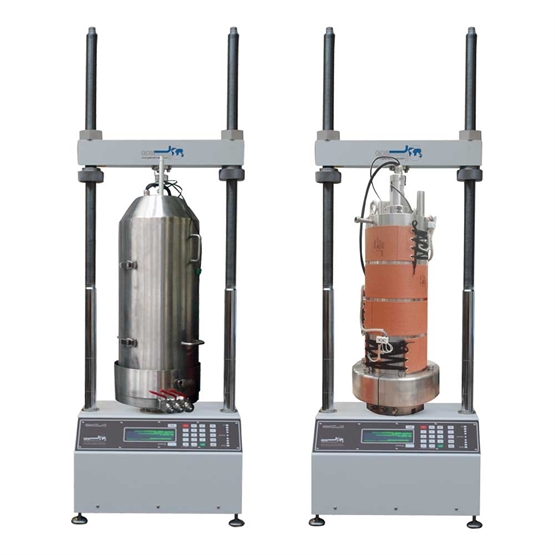
Innovative laboratory testing equipment and procedures specifically designed for frozen soils are also keys to advancing permafrost geotechnics. Leveraging the state-of-the-art permafrost geotechnical laboratory at Ohio State, we investigate the complex mechanisms of degrading permafrost in a controlled setting, study permafrost-structure interactions at the element scale, and produce lab test data for numerical model verifications and validations. We are committed to developing new testing methods and procedures, evaluating existing standards, and recommending new testing standards for geotechnical engineering applications in permafrost and other cold regions.
Our lab is currently in the process of acquiring an Environmental Triaxial Automated System (ETAS; see the left photo), which is a temperature-controlled load frame-based triaxial testing system. Utilizing its heating and cooling system and high-pressure testing capability, we design and provide optimal conditions for each frozen soil test to achieve the aforementioned research goals.
Multiphysics numerical modeling for geotechnical applications in permafrost and cold regions
Multiphysics numerical models are critical tools for simulating frozen soil behaviors. Our research team develops and applies these models to predict the behaviors of permafrost, active layer, seasonally frozen soil, and artificial frozen soil. We also study their interactions with structural foundations and project the impact of permafrost degradation on civil infrastructure under various climate scenarios.
The multi-physics process of permafrost degradation involves heat transfer, moisture transport, and stress-strain equilibrium. A model framework fully coupled with these three different physics is known as a thermo-hydro-mechanical (THM) model (see the figure below). Our research group focuses on extending the THM model framework for simulating thaw consolidation, thaw-induced slope failures, coastal block failure, and bearing capacity reduction of degrading frozen soil.
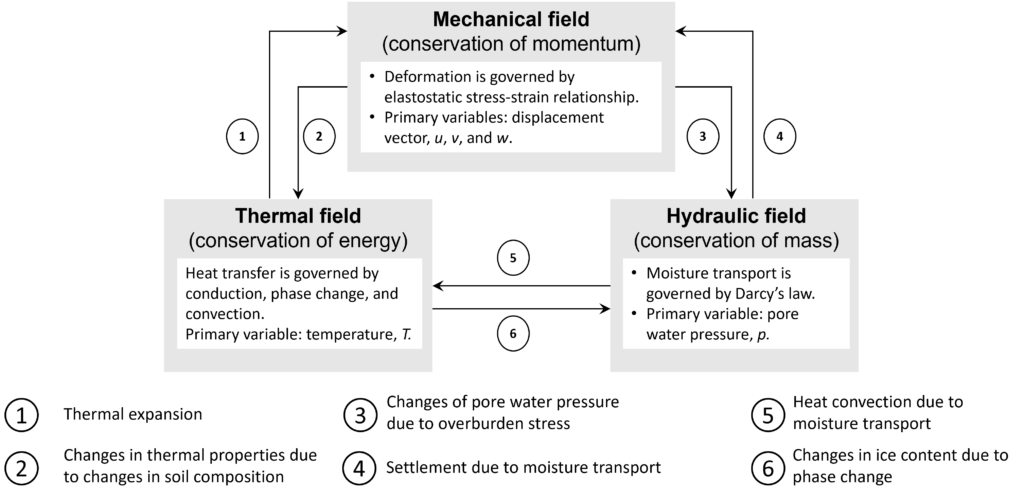
In the THM model, governing equations are derived based on the laws of conservation of each field: conservation of energy for the thermal field, conservation of mass for the hydraulic field, and conservation of momentum for the mechanical field. For permafrost geotechnical applications, we consider physical processes such as heat conduction, phase change, thermal convection, fluid flow due to pore water pressure, elevation, thermal gradients, and force equilibrium based on the effective stress theory.
The THM model is applied to study the thaw consolidation of a frozen soil column (see the animation on the right) and permafrost-pile interactions following the framework below. The photos on the bottom right show pile foundations built to support various types of civil infrastructure in Arctic Alaska.
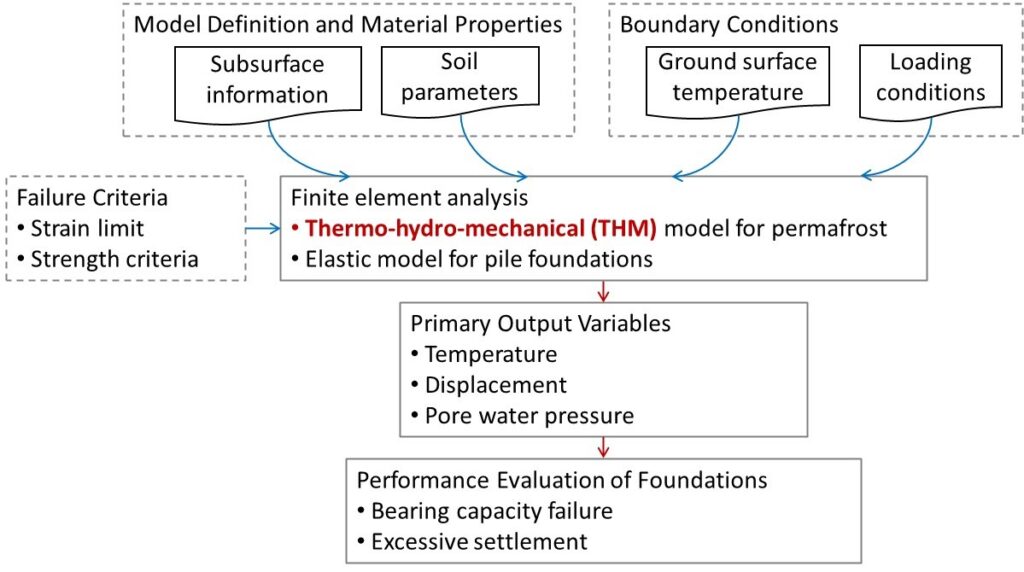
Pile foundations supporting various types of civil infrastructure in permafrost regions. Photos are taken by Liew in October 2018 in Utqiaġvik, Alaska.
Community survey and knowledge co-production for understanding effects of permafrost degradation and coastal erosion on civil infrastructure in Arctic coastal villages
When investigating the impact of permafrost degradation and coastal erosion on civil infrastructure at the local community level in Arctic villages, we recognized the importance of collaborating and co-producing knowledge with the residents. We designed a community survey (see the image on the right) and collected observations shared by residents in four Arctic coastal communities. Based on their inputs, we constructed heatmaps of permafrost degradation and coastal erosion (see the bottom figures); the heatmaps are reasonably consistent with modeled data synthesized from the scientific literature.
This preliminary result shows that the information provided by Arctic residents is critical and should be integrated with scientific and engineering research and policy making to prioritize the most urgent and important issues related to the performance of civil infrastructure under continued climate warming. Our research group will continue to develop effective methods of knowledge co-production to foster mutual understanding among the Arctic stakeholders and facilitate a sustainable Arctic system. For more information about this study, read here.
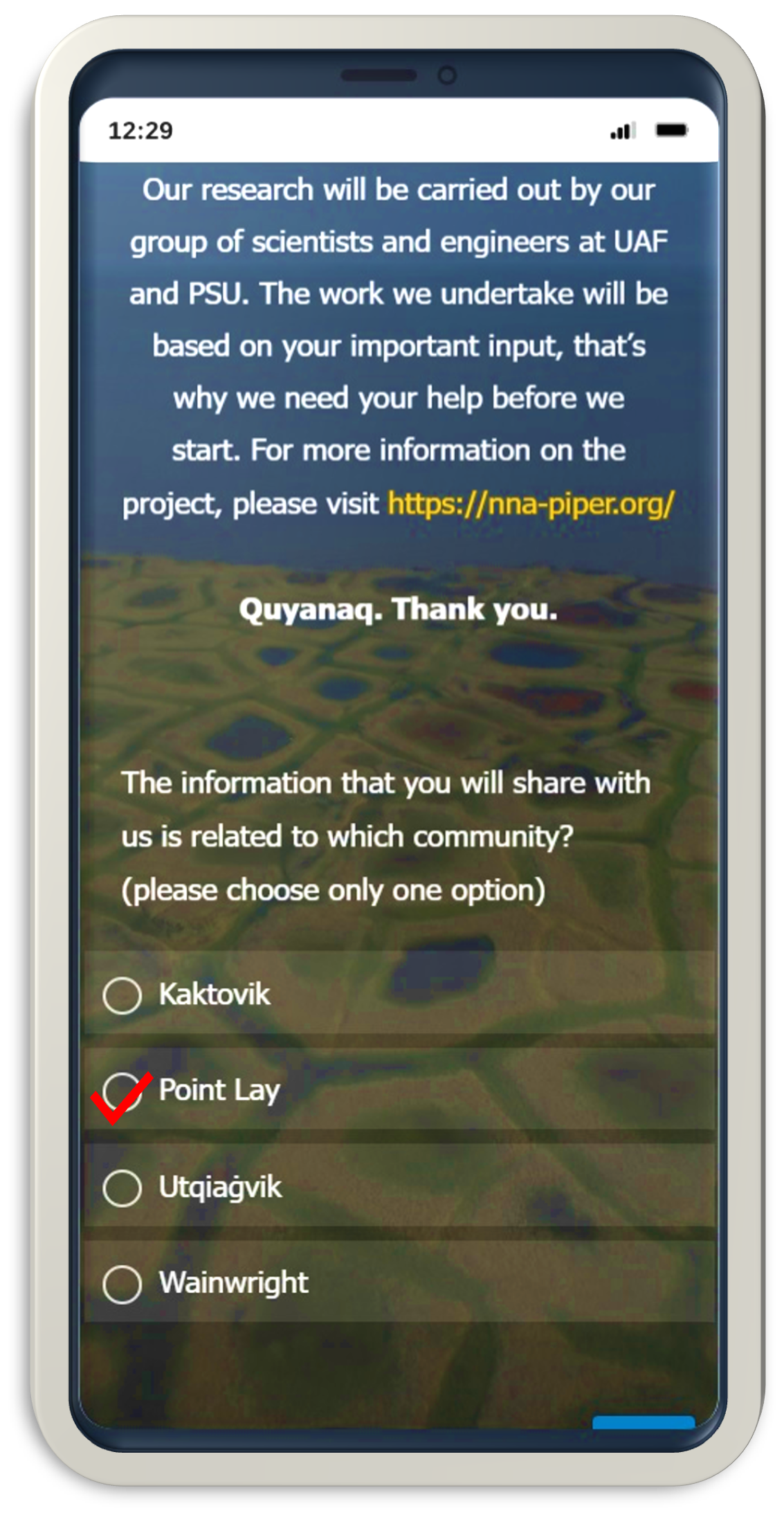
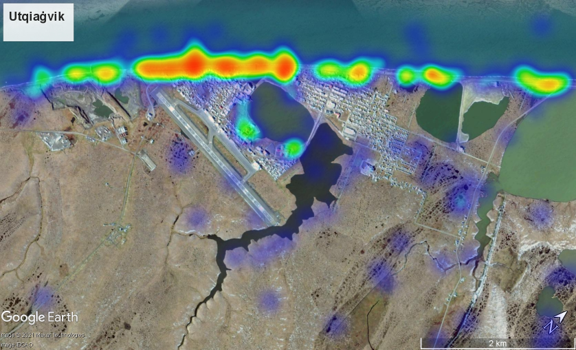
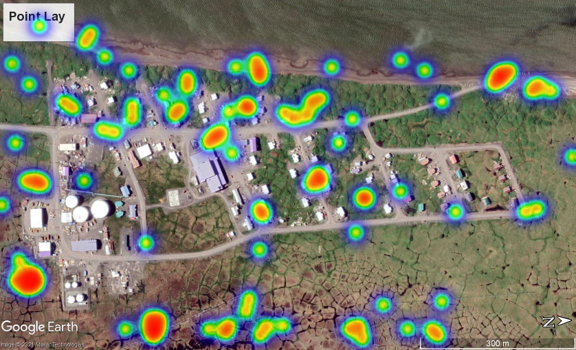
Coastal permafrost erosion and its prevention and remediation measures
Erosion along high-latitude coasts has been accelerating in recent decades, resulting in land loss and infrastructure damage, threatening the wellbeing of local communities, and forcing undesired community relocations. It is therefore important to understand coastal erosion processes that are specific to northern high-latitude sites. Thermal abrasion is the primary coastal erosion process along ice-rich permafrost coastlines. It is due to the combined mechanical and thermal action of waves at the underwater bluff base. Thermal abrasion then leads to the development of a wave-cut niche, leaving a cornice overhanging and eventually collapsing under its self-weight. This feature, which is unique to ice-rich permafrost coasts, is known as block failure (see the figure on the right).
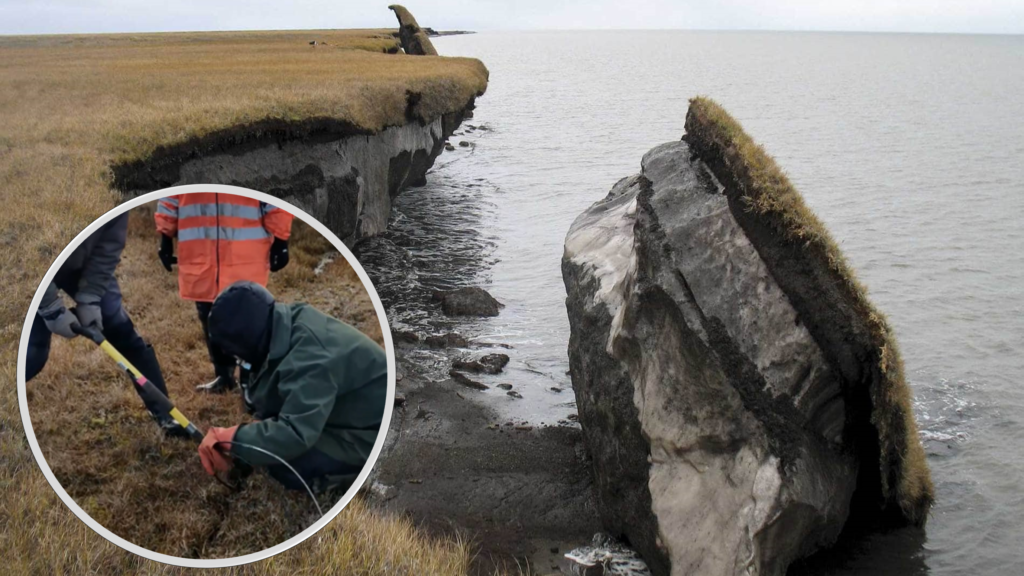
Our group is currently developing a thermo-hydro-mechanical (THM) numerical model for simulating the stability of overhanging cornices along the permafrost coast. We will formulate the material failure criteria for degrading permafrost and consider the temperature-dependent yield surfaces for various soil compositions. Together with remote sensing techniques and distributed acoustic sensing technologies, we aim to establish an early warning system for coastal permafrost erosion.
The evaluation of the state of practice of current coastal stabilization measures across several coastal communities in high northern latitudes shows that rock revetments are the most common measures applied along permafrost coasts. In the event of an emergency, non-engineered expedient measures are also constructed to remediate coastal erosion. The figure on the right shows sand berms and sandbags that were constructed in Utqiaġvik (an Arctic coastal village) to remediate coastal erosion. Nonetheless, these materials are lost to the sea every year and need to be replenished. Our research team aims to explore new and potential coastal stabilization measures to address erosion specific to northern high-latitude coastlines. Read more here.
Investigations of effects of civil infrastructure systems and anthropogenic processes on permafrost carbon and its feedback to climate warming
While climate change causes permafrost degradation and subsequent civil infrastructure failures, the existence of civil infrastructures and construction activity also leads to direct or indirect permafrost degradation. Civil infrastructure and construction activity change the surface albedo of a permafrost region, causing permafrost to be more prone to thawing. During thawing, the previously frozen organic matter in permafrost starts to decompose and produce carbon dioxide and methane. The release of permafrost carbon and the subsequent intensification of climate warming can result in further permafrost degradation. The objective of this research project is to understand and quantify the long-term direct and indirect effects of construction activity, in-service, and abandoned civil infrastructures on permafrost degradation. We will develop a thermo-hydro-chemical model that is coupled with the biogeochemical process of permafrost to investigate when and how much permafrost carbon will be released as a result of construction and existence of various types of civil infrastructures. This research aims to understand the roles of Arctic civil infrastructures and construction in the global carbon cycle models. This research will also help improve the design of sustainable Arctic civil infrastructure systems.
